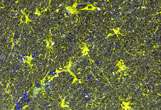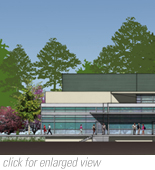 |
||||
|
Biosafety Level 3 (BSL-3) laboratories are explicitly designed to protect both the research scientists and the public from exposure to biological agents or biotoxins used in research. The design principle used to ensure the safety of the facility is described as a “box-within-a-box-within a box.” This engineering principle has been utilized to safely design and operate these types of infectious disease laboratories for over 50 years. Research activities using infectious pathogens occur in chambers under negative pressure deep within the containment laboratory; these laboratories are in turn completely contained within the facility’s outer building. Air leaving the chambers, laboratories and the outer building passes through multiple high efficiency particulate air (HEPA) filters. In fact, air leaving the building is cleaner than air coming into the building. All employees who have access to or work with select agents are required by federal law to undergo a FBI background check and fingerprinting. The Tulane Regional Biosafety Laboratory has been designed in compliance with federal regulations set forth by the National Institutes of Health. These regulations govern the construction, use, security, inspection and certification of a BSL-3 laboratory, including the safeguards to ensure the proper containment and destruction of infectious agents. BSL-3 facilities have operated safely in the United States for more than 30 years. Before entering the laboratory area, employees are required to remove street clothing and put on protective clothing. When leaving, they must remove protective clothing and shower before changing back into street clothing. Protective clothing is sterilized before being laundered. The Tulane National Primate Research Center has operated a BSL-3 laboratory for over 15 years.
|

|
©2013 Tulane University |
